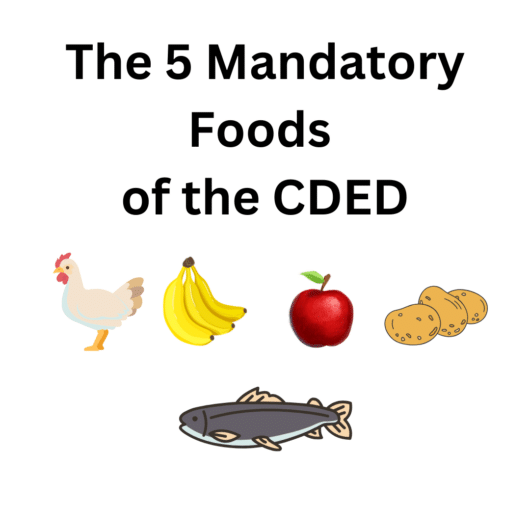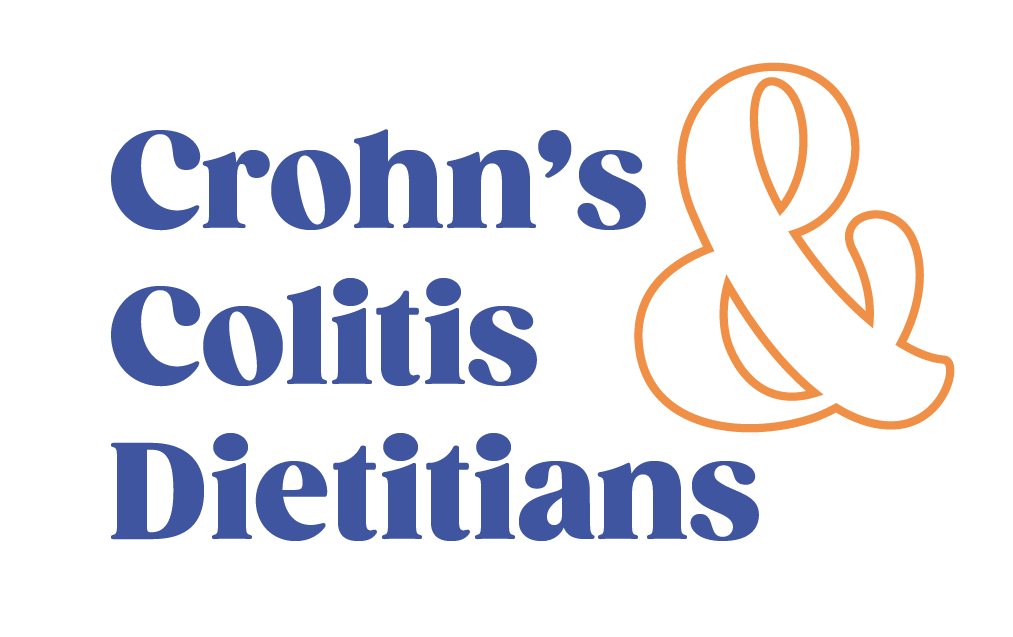Crohn’s disease is a chronic inflammatory bowel disease (IBD) that primarily affects the gastrointestinal tract. It is characterized by inflammation of the digestive tract, caused by an inappropriate response of the immune system. This condition can occur anywhere along the digestive tract, from the mouth to the anus, but it most commonly affects the small intestine and the beginning of the large intestine. This blog will explore whether the Crohn’s Disease Exclusion Diet is helpful for Crohn’s management.
Crohn’s Disease Exclusion Diet
Symptoms of Crohn’s disease can vary widely from person to person and may include abdominal pain, diarrhea, fatigue, weight loss, and malnutrition. The exact cause of Crohn’s disease remains unclear, but it is believed to involve a combination of genetic predisposition, immune system dysfunction, and environmental factors.
Although there is no known cure, managing Crohn’s disease typically involves medication to control inflammation, dietary adjustments, and in some cases, surgery to remove damaged portions of the intestine. It is a lifelong condition that requires ongoing medical attention and can significantly impact a person’s quality of life.
Nutrition plays a crucial role in the management of Crohn’s disease, as it directly affects the gastrointestinal tract and can help alleviate symptoms, support inflammation reduction and improve overall quality of life. Individuals with Crohn’s often face challenges in absorbing nutrients due to inflammation and damage to the intestinal lining. Therefore, a personalized dietary plan, often developed in consultation with a healthcare provider or registered dietitian is essential.
On Therapeutic Diets
Many therapeutic diets have been shown to be helpful for IBD. While you may have heard that following a low residue diet for Crohn’s disease can be helpful for active IBD, it is important to not follow this diet for a long period of time.
The same goes for a low FODMAP diet. Following these diets longer than recommended can negatively impact the microbiome.
Certain foods that are high in fiber have prebiotic properties that have been shown to be helpful for patients with IBD thereby inducing remission. Exclusive Enteral Nutrition (EEN) is used when a person’s nutritional needs are met through formula which has been shown to help induce remission in children with IBD. Another diet that is commonly prescribed in Crohn’s disease is the specific carbohydrate diet or SCD.
While there’s no one-size-fits-all solution for managing its symptoms, dietary adjustments can make a significant difference in alleviating discomfort and improving the overall quality of life for those with this condition. One dietary strategy that’s gaining attention in the Crohn’s community is the Crohn’s disease exclusion diet (CDED).
In this blog post, we’ll dive into what this diet entails, how it works, who might benefit from it, as well as give our own thoughts on it.
What is the Crohn’s Disease Exclusion Diet?
The CDED is a comprehensive and difficult dietary approach designed to minimize or restrict the consumption of foods that could potentially harm the microbiome or disrupt intestinal barrier function, as suggested by research from Sigall Boneh and Levine et al (1, 2).
It is implemented through a three-phase process, consistently supplemented with Partial Enteral Nutrition (PEN) derived from a formula, which gradually decreases over the course of treatment, with the final stage incorporating 25% of daily nutrition from PEN.
For individuals who are hesitant to undergo Exclusive Enteral Nutrition, the CDED stands as one of many alternatives for initiating remission, as supported by studies. We will share more of our thoughts on this at the end.
The Research & Purpose of CDED Phases
The CDED differs slightly in its management compared to other diets, with its structure comprising three distinct phases.
Phase One: Induction Phase

The initial two phases, each spanning six weeks, are collectively known as the Induction Phase, primarily designed to initiate remission. During the first six-week segment of the Induction Phase, insoluble fiber is restricted to prevent bowel obstructions. Other items worthy of note in the first six weeks include:
- Complete nutrition formula/shake should constitute 50% of total energy intake
- 5 mandatory foods: Foods including chicken, eggs (2x/day), banana (2x/day), apple (peeled & cooked), potatoes (cooked and cooled), and fish 1x/week
Foods to Avoid/Limit
- High fat
- Animal fat
- Soy
- Dairy
- High Sugar
- Emulsifiers
- Maltodextrin
- Sulfites
List of Allowable Foods
- The 5 mandatory foods
- Fresh fish 1 serving, 1x/week to substitute chicken
- Tuna canned (olive or canola oil) 2x/week only in phases 2-3
- Fresh seafood or salmon, 1 serving only 1x/week in phase 3
- Red meat is encouraged to be avoided. If having red meat, 6 oz 1x/week in phase 2 and 3
- Almonds or walnuts, unprocessed/unroasted/unsalted 6-8 per day only in phases 2 and 3
- Raw tahini without preservatives or sulfites in phases 2 and 3
- Dairy is phase 3 only (unprocessed, full fat, without additives)
- Lentils/Beans/Legumes: Dried, ½ cup uncooked, not frozen or canned. In phases 2 and 3
- Olive oil and/or Canola oil allowed in all phases
- Avocado (all phases, ½ per meal) 1x/day
- Strawberries (all phases) 5 per day
- Melon (cantaloupe or honeydew), 1 slice
- Orange juice, 1 glass per day
- Pear, kiwi, peach in phase 2 and 3 only
- Blueberries, 10 as a substitute to strawberries allowed in phase 2 and 3
- Mango, pineapple, oranges ½ cup cubes allowed after week 10
- Other fruits allowed in phase 3 except for pomegranate, cactus, passion fruit
- Tomatoes 2/day in all phases
- Carrots, 2 peeled in all phases
- Spinach, uncooked, 1 cup in all phases
- Lettuce, 3 leaves, in all phases
- Zucchini (1 large or 2 small) phase 2 and 3
- Mushrooms 4-6 phase 2 and 3
- Broccoli/cauliflower (not at the same time), phase 2 and 3
- Other vegetables allowed except for kale, leeks, asparagus, and artichoke
- Rice (unlimited) and rice noodles allowed in all phases
- Quinoa allowed in phase 2 and 3
- Bread, homemade with baking powder instead of yeast, 1 slice per day (phase 2) and 2 slices (phase 3)
- Oatmeal, ½ cup in phase 2 and phase 3
- Pasta, 1 cup cooked to substitute bread allowed in phase 3
Phase Two: Reintroduction
By the tenth week, the second phase is 7-12 weeks and reintroduces many vegetables. The Induction Phase takes precedence as the pivotal stage for diet effectiveness. Highlights from week 7-12 of the CDED include:
- Complete nutrition formula/shake should constitute 25% of total energy intake
- 5 mandatory foods: Chicken, Eggs (2x/day), Banana (2x/day), Apple (peeled & cooked), Potatoes (cooked and cooled), Fish 1x/week
- Expanded list of foods
- Additional fruits and vegetables allowed for weeks 7-9 and others allowed starting week 10
Phase Three: Maintenance Phase
Following remission, the Maintenance Phase is implemented to sustain it. Although the core principles of the diet are most evident during the Induction Phase, the Maintenance Phase allows for the inclusion of certain foods not initially recommended, promoting long-term adherence if necessary. Key components of the Maintenance Phase include:
- Complete nutrition formula/shake should constitute 25% of total energy intake
- There are no mandatory foods, however, potentially harmful foods should continue to be limited or avoided
- Goal is to maintain phase 2 diet with additional foods 5 days per week
- Allowed 2 homemade “free” meals 2 days per week (some allowance for restaurant meals)
- There are few foods not allowed at all (fast food, processed meats, red meat)
Existing research primarily focuses on the Induction Phase, making it the most substantiated aspect, while investigations into the Maintenance Phase remain ongoing. To provide a comprehensive perspective, data for both the Induction and Maintenance Phases are presented.
The Maintenance Phase involves adhering to the prescribed diet for five consecutive days, with allowances for a maximum of two consecutive days (typically on weekends) permitting two unrestricted meals per day, totaling a maximum of four unrestricted meals per week.
However, specific foods like hot dogs, sausages, soft drinks, luncheon meats, bacon, and frozen dough remain excluded from these unrestricted meals and are not included in the table of guidelines.
Who Can Benefit?
The Crohn’s disease exclusion diet may be beneficial for many individuals with Crohn’s disease, especially those seeking an alternative or complementary approach to managing their symptoms.
However, it’s crucial to undertake this diet under the guidance of an IBD focused registered dietitian who can ensure that you’re meeting your nutritional needs and following a safe and effective plan.
What We Think
There are a lot of IBD diets that show promise for those with IBD. When evaluating a diet we like to ask questions like:
- Is there evidence to support the use of this diet?
- Is it helpful for those with IBD with symptom reduction and inflammation reduction?
- Is it difficult to maintain long-term?
- Do the benefits outweigh the effort it will take?
There are a lot of people who just may not be a good candidate for using this diet. In addition, in our practice, we have been able to see similar or better results with less restrictive protocols and consume a diet including a variety of nutritious foods. This is not a diet we routinely recommend to our patients and we suggest our patients to focus on diversifying their nutrition intake.
In Conclusion
Although the CDED diet did help with significant symptom and inflammation reduction, as a whole we feel that there are less restrictive approaches available to achieve the same or similar results.
Remember that what works for one person may not work for another, so a personalized approach to nutrition remains essential in the battle against Crohn’s disease.
Always consult with a healthcare professional before making significant dietary changes to ensure that your approach aligns with your specific needs and goals. If you have Crohn’s disease, consider discussing the Crohn’s disease exclusion diet with your healthcare provider or a registered dietitian to see if it might be a suitable addition to your overall treatment plan.
Other Similar Articles:
What to Eat with IBD Mini Program
References:
- Arie Levine et al. Crohn’s Disease Exclusion Diet Plus Partial Enteral Nutrition Induces Sustained Remission in a Randomized Controlled Trial. Gastroenterology. 2019 Aug;157(2):440-450.e8. doi: 10.1053/j.gastro.2019.04.021. Epub 2019 Jun 4. PMID: 31170412 DOI: 10.1053/j.gastro.2019.04.021
- Rotem Sigall Boneh et al. Dietary Therapy With the Crohn’s Disease Exclusion Diet is a Successful Strategy for Induction of Remission in Children and Adults Failing Biological Therapy. J Crohn’s Colitis. 2017 Oct 1;11(10):1205-1212. doi: 10.1093/ecco-jcc/jjx071. PMID: 28525622 DOI: 10.1093/ecco-jcc/jjx071.
- Jennifer Smith, MS, RD, CSP, LD, LMT. Introduction to Crohn’s Disease Exclusion Diet. ANHI Abbot Nutrition Health Institute.
- Chun-Han Lo et al. Dietary Inflammatory Potential and Risk of Crohn’s Disease and Ulcerative Colitis. CLINICAL—ALIMENTARY TRACT| VOLUME 159, ISSUE 3, P873-883.E1, SEPTEMBER 01, 2020. Published: May 07,2020DOI: https://doi.org/10.1053/j.gastro.2020.05.011




0 Comments